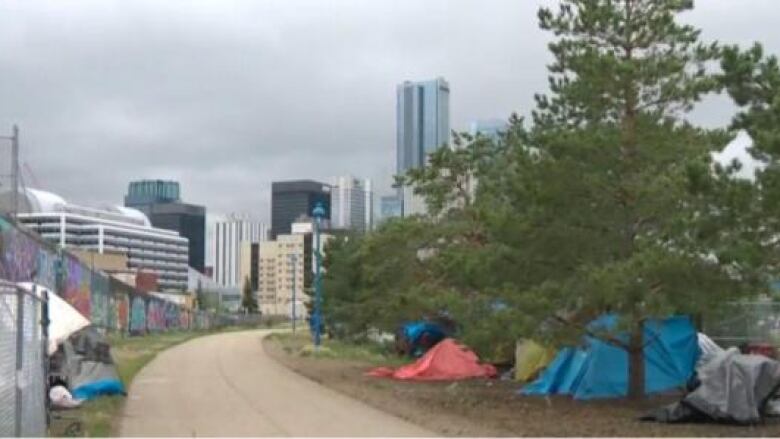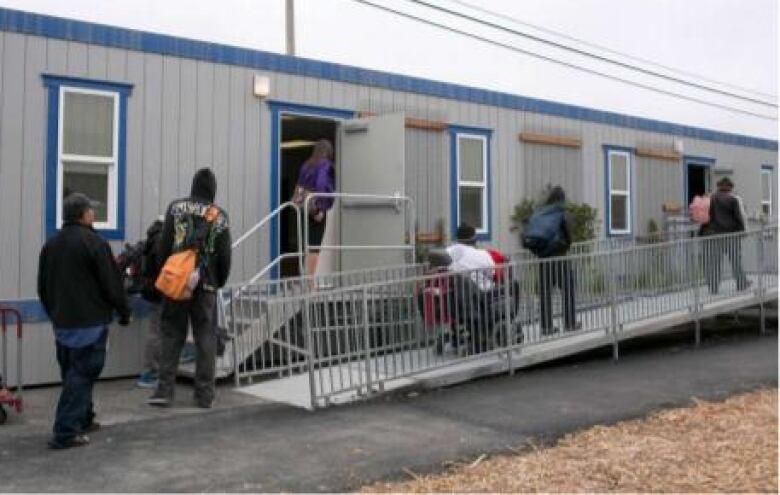City proposes new approach to solving homeless camps
City had 4,000 complaints about makeshift camps in 2019, up from 1,160 in 2018

Edmonton city staff havesome new ideas to help more people who live on the streets find a place to live after a salvo of citizen complaints this year about tent cities.
The city received 4,000 complaints about homeless camps so far in 2019 up from 1,160 in 2018.
A report presented to the city's police commission Thursday outlines the latest statistics and options to get more than 1,700 homeless people off the streets.
The city's directorof housing and homelessness, Christel Kjenner, said overall, the number ofpeople living on the streets has gone down since 2008.
"What we're seeing is that the complexity of need in the population that's sleeping outside is maybe driving more disorder."
- Downtown homeless encampments prompt city to ramp up housing efforts
- Riverdale residents call for homeless camp solution after multiple fires in Dawson Park
Kjennerpresentedthree options to the commission: low-barrier shelter, bridge housing and expedited housing.
"I think we're targeting any and all solutions at this point," Kjenner told media."Just enforcing encampments is not a sustainable solution to resolving the homelessness that people who are sleeping outside are experiencing."
It costs$1.8 million a yearto clean up makeshiftcamps, the report says.
Bridge housing, one of the latest methods the city is exploring, could take on a number of forms, from modulars built off-site, Sprung tents and repurposed workforce housing.
Those qualifying for bridge shelter would be there for 30 to 90 days while they wait to move into a permanent supportive unit.

Kjenner will present high-level costs associated with bridge housing to council's community and public services committee Dec. 4 and outline the pros and cons of the different technologies.
At the commission meeting, police Chief DaleMcFee was open tonew ideas.
"What I heard today is we lack the transition housing," McFee said. "Stabilize them first is what I heard loud and clear."
McFeesaid he supports any move to transition people from that reality, recalling a question someone asked him recently: "'Chief, how do you police the homeless?'
"And I asked, 'Does that actually even make sense?' But that's really what we're kind of doing."
Kjenner said although the homeless population has gone down by 15 per cent since last year, the city faces complex challenges.
People are having a harder time accessing well-paying jobs, she said, and rents have gone up, outpacing increases in income.
Affordable housing complexesin the downtown area and The Quarters have closed over the past decade, she added.
There remains a gap in resources for mental health help, she added.
- Improving shelters key to curbing homeless camps in Edmonton, report shows
- Crisis team needed to help house Edmonton's homeless, councillors say
Other parts of the new strategy include working to revise community standards for shelters.
Kjenner said the city is also working with Hope Mission on designing the redevelopedHerb Jamieson Centreto ensure it'smore inviting than the current space at 100th Streetand 105A Avenue.
On any given night, only 70 per cent of shelter beds are used in Edmonton meaning about 200 are empty.
Clients cited several reasons they avoid shelters: safety, unreasonable rules, no space for couples, lack of privacy, no storage, can't bring pets, and have to leave by 6 a.m.
Another development to come is a project called Homes for Heroes a community of tiny homes for veterans in the city's northeast.












_(720p).jpg)


 OFFICIAL HD MUSIC VIDEO.jpg)
.jpg)



























































































